#Common checkered-skipper
Text
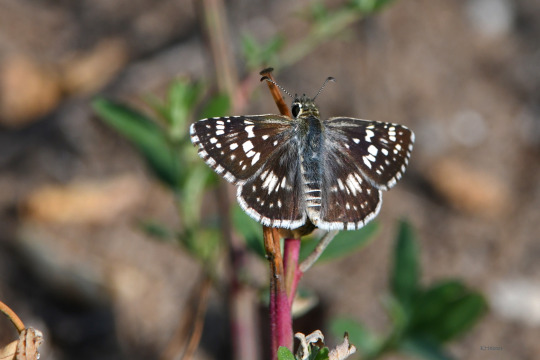
Common Checkered-Skipper
The middle of August finds the Common Checkered-Skipper gaining momentum as its numbers rise while reaching full stride.
210 notes
·
View notes
Text
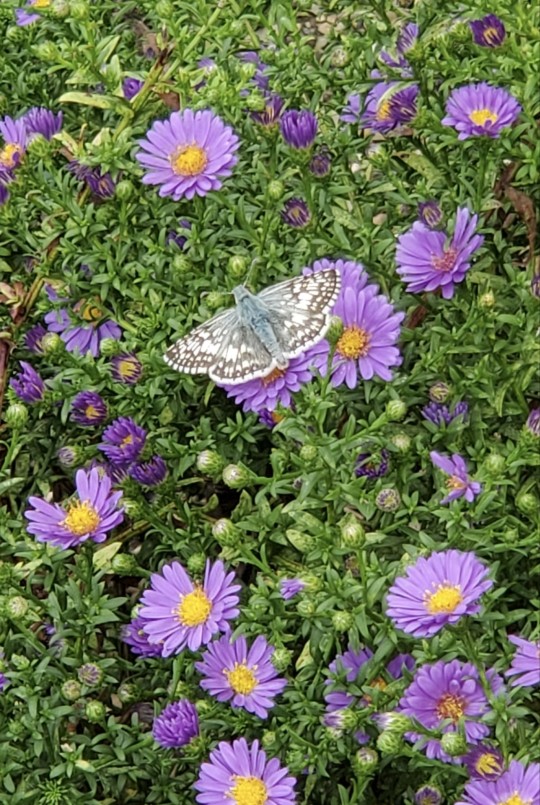
9/13/22
0 notes
Text
11 August 2023 - Friday Field Notes


Saw not one, but two prairie rattlesnakes this week. Despite having the little alarm rattle on the tail, a lot of times the prairie rattlesnake will freeze and hope you just pass on by without noticing them.

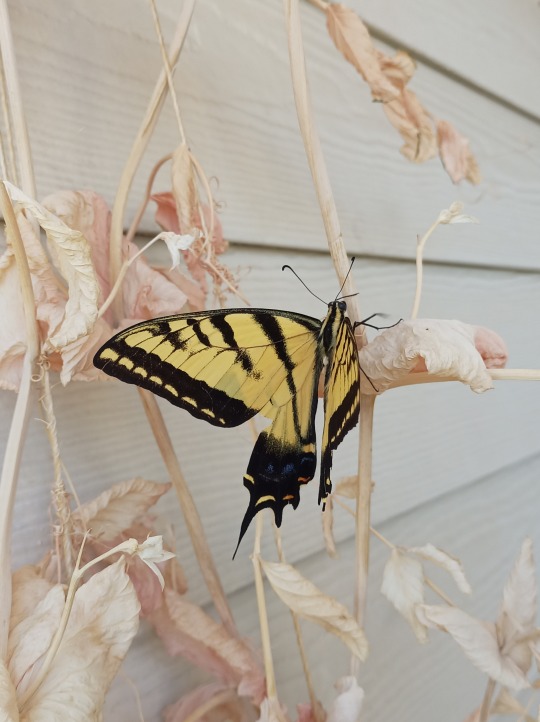
Found this Swallowtail Butterfly in the breezeway of my apartment. Something took a bite out of the wings, my guess would be the Barn Swallows that are also nesting in the breezeway. Felt kind of bad for it, but butterflies are also notoriously hard to photograph. Managed to capture the bugger and stick it on my balcony so it could fly off.

And the Barn Swallows hatched! Look at the little frog face babies! Second batch of nestlings in the ice cream tub. Neapolitan flavor.

These Common Checkered Skippers were getting it on when I was trying to set up a game camera. Chain kink, hope they had a safe word.

And this lovely Rocky Mountain Bee Plant. A lot of people say it's kind of smelly, but I didn't notice anything. Very pretty and attracts all sorts of pollinators.
#nature#little ghost on the prairie#friday field notes#prairie rattlesnake#barn swallows#swallowtail butterfly#common checkered skipper#rocky mountain bee plant#practice safe sex y'all#look i have to make the dirty jokes on tumblr because i can't make them at work okay
12 notes
·
View notes
Photo

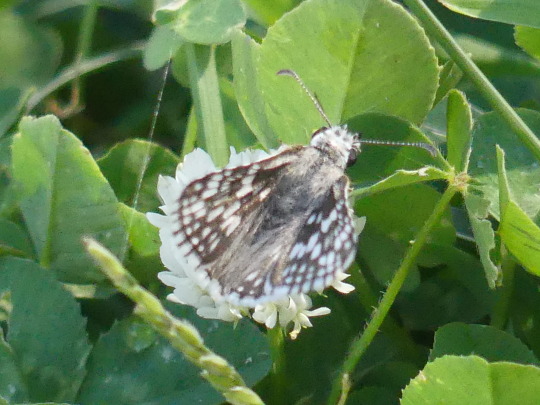
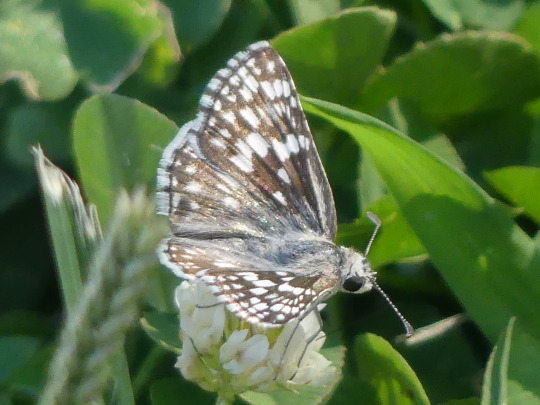


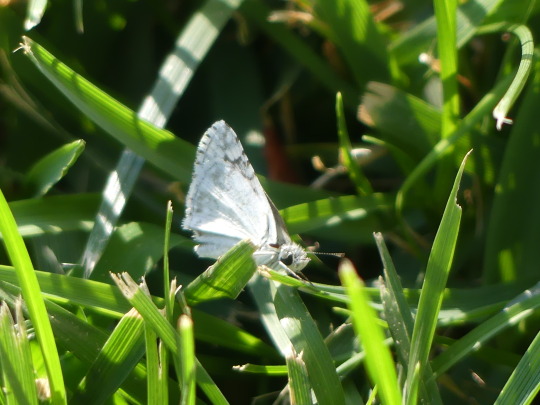
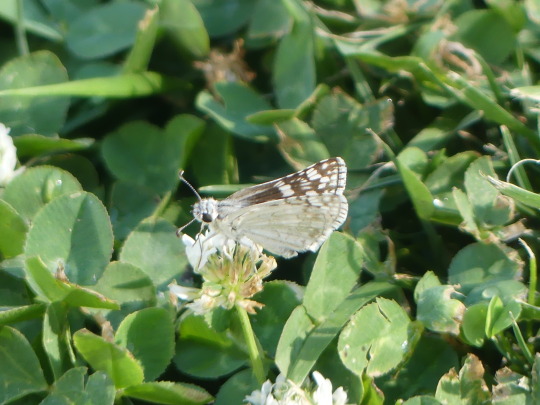


Saw these guys out on the front grass! I think they might be Common Checkered Skippers? But not confident on the species!
3 notes
·
View notes
Text
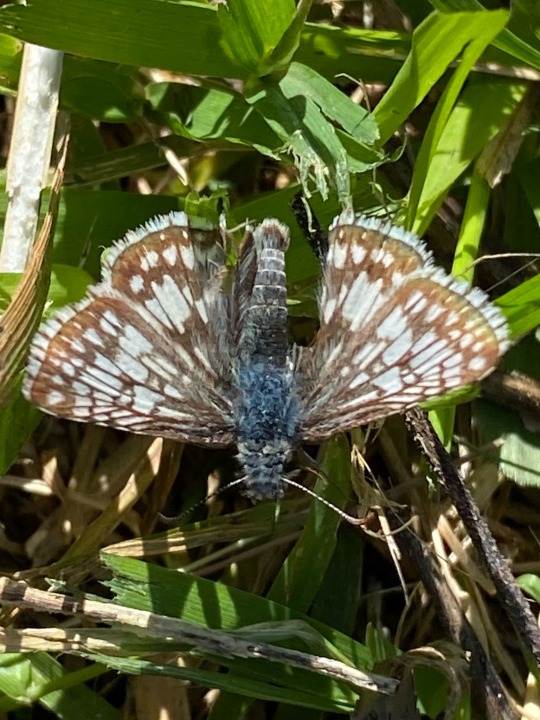
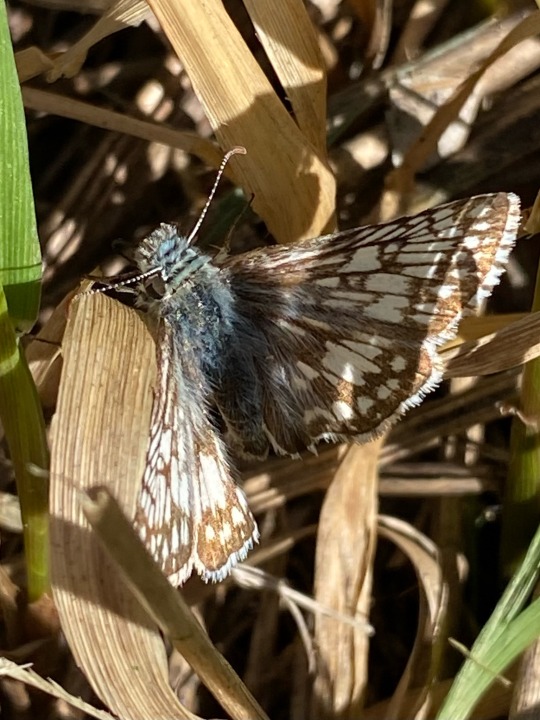
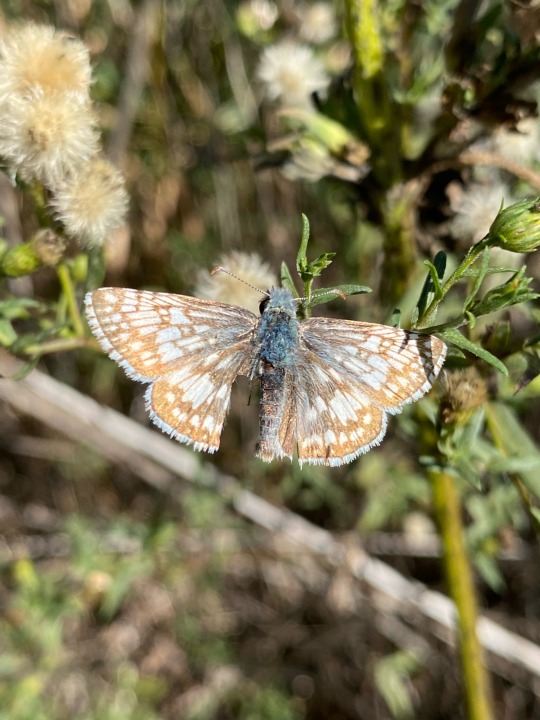
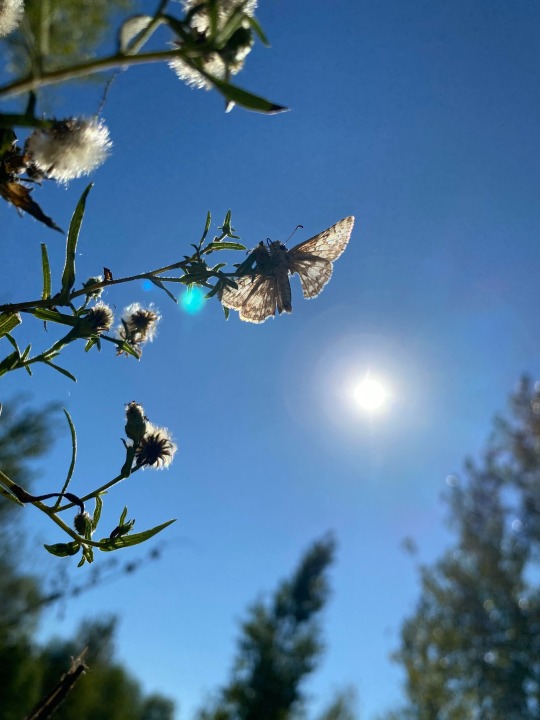
Common checkered skipped (Burnsius communis) that I chased around for a few minutes then it got tired out and I finally got pictures. Very skittish, love the blue
Taken 10/8/23
1 note
·
View note
Photo
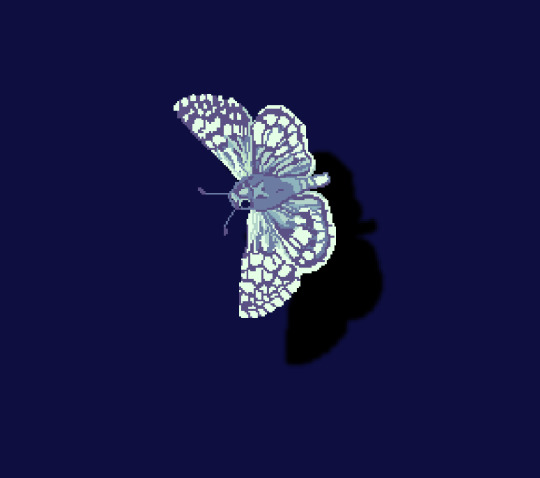
Common Checkered-Skipper (Burnsius communis)
0 notes
Text


Skippers are so freakin cute 🥰
Burnsius communis (common checkered skipper), Northern California
Blehhh 😛
#I kinda gave up on glaze etc for now#it distorts photos too much#and uses a lot of computing power#which my computer can handle but then I can’t do other things while it’s processing images#but still fuck this ai shit#nature#nature photography#bugs#biodiversity#animals#inaturalist#arthropods#bugblr#entomology#insect appreciation#skipper#cute butterfly#butterfly#lepidoptera#Burnsius communis#hesperiidae#fuzzy buddy#cute#critters#invertebrates#pollinators#springtime#macro photography#macro#flower
136 notes
·
View notes
Text
Redacted Favorite Butterflies* (1/3)
*The lepidoptera order includes skippers, butterflies, and moths.
If I don't do a character and you'd like me to, shoot me an ask and I will :]
Shaw pack + Solaire clan:
David: The common checkered skipper, a small and especially common skipper that he’s fond of. It often feeds on things in his yard and he’s taken to planting aster plants in his backyard so they’ll show up

Asher: California Dogface, the state insect of California! It’s quite rare so he’s only seen one once, but often brags about it to David, who has yet to see one himself

Milo: He loves the lorquin’s admiral butterfly- it’s common in California but he likes any time he sees it. He’s never said as much but the reason he likes it so much is how dramatic and brightly colored it looks

Sam: Ilia underwing- while not a California native they can occasionally be found there. A tad more common in the southeast where I headcanon he’s from, so it probably reminds him of that a bit!

Vincent: Pipevine swallowtail, a California native butterfly that’s recently been reintroduced in middle to upper California. He likes them because they look like a night sky!

#calico speaks#redacted asmr#bug tag#i feel like i need a tag for this kind of post but idk what to tag it#undescribed
44 notes
·
View notes
Text
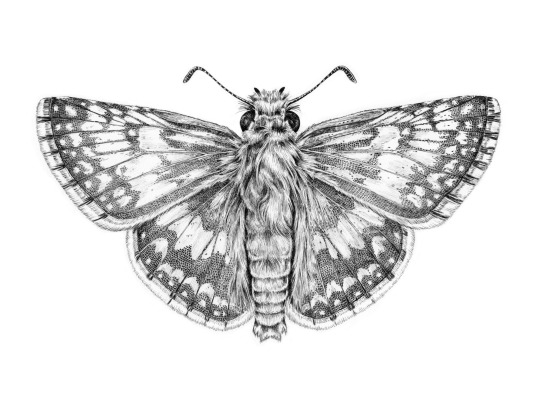
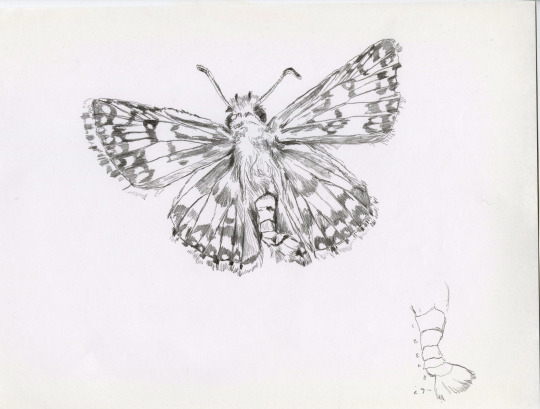
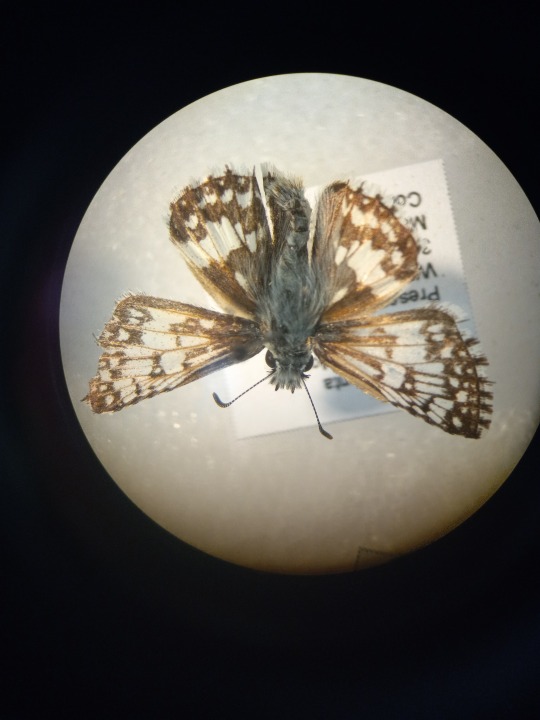


Common Checkered-Skipper, specimen illustration--they sure have a lot of little scales
4 notes
·
View notes
Text
Back on my hyperfixation shenanigans so I have not slept and here's a list of what I consider to be the prettiest beetles, butterflies and moths, damselflies, and grasshoppers and crickets that inhabit Colorado and Kentucky according to insectidentification.org :
COLORADO
Emerald ash borer (Agrilus planipennis)
Fifteen-spotted lady beetle (Anatis labiculata)
Golden tortoise beetle (Charidotella sexpunctata)
Knapweed root weevil (Cyphocleonus achates)
Longhorn beetle (Semanotus amethystinus)
Dogbane Leaf Beetle (Chrysochus auratus)
European Ground Beetle (Carabus nemoralis)
Golden Net-wing Beetle (Dictyoptera aurora)?
Margined Blister Beetle (Epicauta funebris)
May Beetle - P. lanceolata (Phyllophaga lanceolata)
Mottled Tortoise Beetle (Deloyala guttata)
Pleasing Fungus Beetle (Gibbifer californicus)
Poplar Borer Beetle (Saperda calcarata)
Shining Leaf Chafer - Anomala spp. (Anomala spp.)
Signate Lady Beetle (Hyperaspis signata)
American Lappet Moth (Phyllodesma americana)
Cinnabar Moth (Tyria jacobaeae)
Common Checkered-Skipper (Pyrgus communis)
Glover's Silkmoth (Hyalophora columbia gloveri)
Great Ash Sphinx Moth (Sphinx chersis)
Autumn Meadowhawk (Sympetrum vicinum)
Black Saddlebags Skimmer (Tramea lacerata)
Bird Grasshopper (Schistocerca spp.)
Obscure Bird Grasshopper (Schistocerca obscura)
Sooty Longwing Katydid (Capnobotes fulginosus)
KENTUCKY
Andrew's Snail-eating Beetle (Scaphinotus andrewsii)
Black Firefly (Lucidota atra)
Calligrapha Beetle (Calligrapha spp)
Eastern Hercules Beetle (Dynastes tityus)
Emerald Euphoria Beetle (Euphoria fulgida)
Glowworm (Phengodes spp.)
Goldsmith Beetle (Cotalpa lanigera)
Metallic Wood-boring Beetle: Chalcophora (Chalcophora fortis)
Notched-mouth Ground Beetle (Dicaelus purpuratus)
One-spotted Tiger Beetle (Apterodela unipuncata)
Rainbow Darkling Beetle (Tarpela micans)
Rainbow Scarab Beetle (Phanaeus vindex)
Six-spotted Tiger Beetle (Cicindela sexguttata)
Southern Sculptured Pine Borer Beetle (Chalcophora georgiana)
Stag Beetle (Lucanus capreolus)
Twice-stabbed Lady Beetle (Chilocorus stigma)
Vietinghoff's Ground Beetle (Carabus vietinghoffii)
Abbott's Sphinx Moth (Sphecodina abbottii)
American Ermine Moth (Yponomeuta multipunctella)
Arched Hooktip (Drepana arcuata)
American Bird's-Wing Moth (Dypterygia rozmani)
Arcigera Flower Moth (Schinia arcigera)
Attentive Crocus Moth (Xanthotype attenuaria)
Basswood Leafroller (Pantographa limata)
Beautiful Wood-Nymph (Eudryas grata)
Black-waved Flannel Moth (Megalopyge crispata)
Blackberry Looper (Chlorochlamys chloroleucaria
Blinded Sphinx Moth (Paonias excaecata)
Bluish Spring Moth (Lomographa semiclarata
Buck Moth (Hemileuca maia)
Carmine Snout Moth (Peoria approximella)
Carrot Seed Moth (Sitochroa palealis)
Cecropia Silk Moth (Hyalophora cecropia)
Changeable Grass-Veneer (Fissicrambus mutabilis)
Colorful Zale (Zale minerea)
Common Lytrosis Moth (Lytrosis unitaria)
Confused Eusarca (Eusarca confusaria)
Cross-lined Wave (Timandra amaturaria)
Curve-toothed Geometer (Eutrapela clemataria)
Dark-banded Geometer (Ecliptopera atricolorata)
Deep Yellow Euchlaena (Euchlaena amoenaria)
Diaphania costata (Diaphania costata
Dimorphic Macalla (Epipaschia superatalis)
Dot-lined White (Artace cribrarius)
Dotted Gray (Glena cribrataria)
Drab Prominent (Misogada unicolor)
Eight-spotted Forester Moth (Alypia octomaculata)
Elder Shoot Borer (Achatodes zeae)
Explicit Arches (Lacinipolia explicata)
Eyed Paectes Moth (Paectes oculatrix)
Falcate Orangetip (Anthocharis midea) (female)
Fall Webworm (Hyphantria cunea)
False Crocus Geometer (Xanthotype urticaria
Fervid Plagodis (Plagodis fervidaria)
Fig Sphinx (Pachylia ficus)
Friendly Probole Moth (Probole amicaria)
Giant Leopard Moth (Hypercompe scribonia)
Goldcap Moss-eater Moth (Epimartyria auricrinella)
Gray-edged Hypena (Hypena madefactalis)
Green Arches (Anaplectoides prasina)
Hag Moth (Phobetron pithecium
Hibiscus Leaf Caterpillar Moth (Rusicada privata)
Imperial Moth (Eacles imperialis)
Lesser Maple Spanworm Moth (Speranza pustularia
Luna Moth (Actias luna)
Melissa Blue Butterfly (Plebejus melissa spp.)
Modest Sphinx Moth (Pachysphinx modesta)
Morbid Owlet Moth (Chytolita morbidalis)
Orange-patched Smoky Moth (Pyromorpha dimidiata)
Pale Beauty (Campaea perlata)
Pale Lichen Moth (Crambidia pallida)
Pale Metarranthis (Metarranthis indeclinata)
Pandorus Sphinx Moth (Eumorpha pandorus)
Parthenice Tiger Moth (Apantesis parthenice)
Pearly Wood-Nymph Moth (Eudryas unio)
Pero Moth (Pero spp.)
Pink-patched Looper (Eosphoropteryx thyatyroides)
Pipevine Swallowtail (Battus philenor)
Pistachio Emerald Moth (Hethemia pistasciaria)
Plebeian Sphinx Moth (Paratrea plebeja) (Caterpillar)
Primrose Moth (Schinia florida)
Promiscuous Angle Moth (Macaria promiscuata)
Raspberry Pyrausta (Pyrausta signatalis)
Rustic Sphinx Moth (Manduca rustica)
Saddleback Caterpillar Moth (Acharia stimulea)
Saddled Yellowhorn (Colocasia flavicornis)
Salt-and-pepper Looper Moth (Syngrapha rectangula)
Satin Moth (Leucoma salicis)
Scarlet-winged Lichen Moth (Hypoprepia miniata)
Schlaeger's Fruitworm Moth (Antaeotricha schlaegeri)
Showy Emerald Moth (Dichorda iridaria)
Small Bird Dropping Moth (Ponometia erastrioides)
Snowy Urola (Urola nivalis)
Sorghum Webworm Moth (Nola cereella)
Southern Flannel Moth (Megalopyge opercularis)
Southern Longhorn Moth (Adela caeruleella)
Southern Pine Sphinx (Lapara coniferarum)
Southern Tussock Moth (Dasychira meridionalis)
The Badwing (Dyspteris abortivaria)
Unspotted Looper Moth (Allagrapha aerea)
Venerable Dart Moth (Agrotis venerabilis
Vine Sphinx Moth (Eumorpha vitis)
Walnut Sphinx Moth (Amorpha juglandis)
Wavy-lined Emerald Moth (Synchlora aerata)
Western Grapeleaf Skeletonizer Moth (Harrisina metallica)
White Flannel Moth (Norape ovina)
White Slant-line Moth (Tetracis cachexiata)
White-fringed Emerald Moth (Nemoria mimosaria)
Yucca Moth (Tegeticula, Greya, and Prodoxus spp.)
Carolina Locust (Dissosteira carolina)
Eastern Shieldback Katydid (Atlanticus spp.)
Slender Meadow Katydid (Conocephalus fasciatus)
True Katydid (Pterophylla camellifolia)
Ebony Jewelwing (Calopteryx maculata)
Midland Clubtail (Gomphurus fraternus)
Red Saddlebags (Tramea onusta)
Seepage Dancer (Argia bipunctulata)
5 notes
·
View notes
Text

new oc refs - and some design notes under the cut!
noah: you all knew rosy maple moth noah was coming, let's admit it! this design for noah is later on in the story, after his transition. when his hair was longer, it was tied up in a bow with the kerchief now around his neck - then the ends of the kerchief looked reminiscent of antennae, while now they resemble wings. noah wears warm, bright colors, which is part of why butterflies gravitate to him so much. his design also has the lightest, softest colors of the main characters, which not only represents his gentle and sweet personality, but also his partial affiliation to the popular kids (via their cabbage butterfly designs; this is mentioned later).
damien: i was actually originally going to make damien a painted lady, but i realized i wanted to have all of the camp's outcasts have moth-inspired designs - so i made damien, an outcast-adjacent, a moth-adjacent: a skipper! and i really wanted to give him flannel, so the common checkered skipper was a good fit. this design, like noah's, is a later one in the story, once the blue dye in his hair has started to fade/grow out, revealing his natural blond - and symbolically revealing that, at least in some ways, damien's status as "outcast" was artificial, and that he'sbeen rejecting his connection to the popular kids.
lexi: death's head moth lexi isn't new - in the story incarnation right before this one she was still butterfly/moth inspired, and had a very cool vest with a "death's head" skull on the back. this new design is the first time her design has majorly changed, as before this she consistently had a jacket/vest, crop top, big sneakers, and purple ponytailed hair - now her design is a lot different, with an outfit inspired by the impeccable style of one of my friends! particularly proud of the idea to have the "death's head" skull design be her belt buckle.
shai: i definitely wanted an iridescent butterfly for shai - before settling on the moth idea i was thinking of making them a morpho. iridescent colors not only display their bright personality, but also their ability to reflect people back to themselves. there's something symbolic to shai and noah being so colorful despite being moths, as opposed to damien being so drab despite technically being a butterfly, but i'll leave it to you to ponder that! (just remember that symbolically moth = outcast and butterfly = popular. or something on those lines!)
other: this isn't about anything present in this ref itself, but about the show's characters as a whole. i think background characters' designs would depend on their affiliations - if they're aligned with lexi's gang they'd be pantry moths, and if they're aligned with the popular kids they'd be cabbage butterflies. on that note, i'm thinking that maybe the leader of the popular kids should be a monarch butterfly, a species so widely recognized, ubiquitous, and popular that it's almost a cliche!
#dandy's doodles#ocs#my ocs#camp keshet#ck#ck noah#ck damien#ck lexi#ck shai#(again i'll change the tags when i settle on a new name. i'm thinking camp aurelia or something)#not much to add here in the tags as all of my design notes are in the post itself#so yeah :) i hope you like them!!!
8 notes
·
View notes
Video
Common Checkered Skipper by David Tibbetts
4 notes
·
View notes
Text
‘Purple Poppy Mallow’ or ‘Winecup’
Callirhoe Involucrata
Malvaceae (Hibiscus / Hollyhock) family

Native to: AR, CO, IA, KS, LA, MN, MO, NE, NM, OK, TX, WY
Introduced and Possibly Naturalized into: AZ, FL, IL, IN, KN, MI, ND, OR, PA, VA, WI
Conservation Status: Not yet assessed
Wildlife and Livestock Use: Is a nectar source with special value for a large number of Native Bees; attractant for Nectar-Bees, Butterflies, Hoverflies, and Predatory Wasps. Minimal deer resistance; semi-evergreen leaves are a common late season food source for Rabbits and Groundhogs. Can also be used to bulk up forage and greens mixes for Livestock- especially during dry seasons.
Plays Larval Host for the Gray Hairstreak (Strymon Melinus), and is primary food source for the Checkered Skipper (Pyrgus Communis) Caterpillar in particular.
Ornamental Use: A showy ornamental that’s easily grown and long-blooming, it’s particularly valued for its color (Ka'igwu / Kiowa Tribe); blooms white, pink, or purple through Mar, Apr, May, and June (sometimes as late as Aug)- though primary color in the wild is a deep maroon to reddish purple; spreads roughly 3 feet from taproot and can be between 6 inches to a foot “tall”.
Makes an excellent groundcover alone or mixed in a grassy area. Great for border areas and rock gardens in particular. May also be planted in a hanging basket in which trailing stems cascade over the sides- though application is not recommended, as a taproot plant.
Full (complete) Sun to Partial (dappled) Shade. Dry to Moist soil- preferring well drained, acid based mediums such as Clay, Loam, and Sand. Medium water use but drought resistant due to taproot.
Culinary Use: Taproot can be harvested in late Summer and fall starting in Aug to Sep; tastes like Sweet Potato. Leaves can be used to thicken soups and stews, and other liquids (Ni Okašką / Osage Nation).
Medicinal Use: Crushed, dried roots are burned and the smoke inhaled for head colds. Aching limbs are also exposed to the smoke to reduce pain. Taproot decoction can be used as an additional pain killer; Tea made from the boiled root drunk for internal pains, and as bath for aching body parts (Dakȟóta / Dakota Tribe).
This is an aggregation of my own personal research into this herb. If you found this helpful or interesting, please consider Tipping or Leaving a Ko-Fi (being Disabled, even $1 helps); you can see my other "Original Content" here.
#Herbarium#Original Content#Personal#2022#Herbalism#Verderer#Oklahoma#Green Witch#Green Witchcraft#Witchy Gardening#Witches Garden#Witch's Garden#Original Herbal Content#Gardening#Gardenblr#Plantblr#Casual Reminder That Oklahoma Is NOT A Midwestern OR Southwestern State#Prairie Magic & Medicine
3 notes
·
View notes
Text



Common checkered skipper, cave crickets, and a red admiral?
#i'm unsure of the red admiral but i don't know what other bug it would be#that looks like an (orange) red admiral lol#it would have been prettier with its wings open but what can u do its a fuckin butterfly#the dumbest shit in the weirdest places#traveling#travel#road trip#photography#photo#butterfly#crickets#bugs#texas
1 note
·
View note
Text
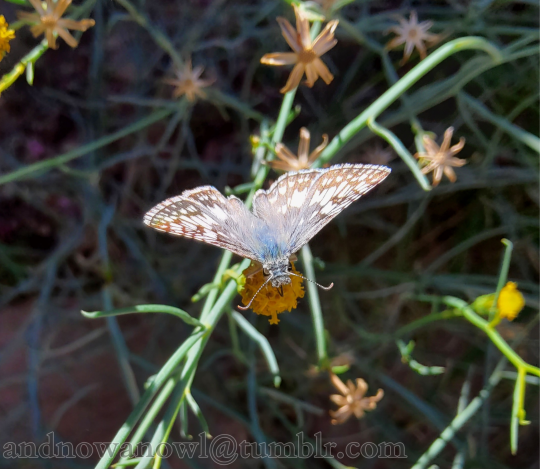
A common checkered skipper butterfly, taken 9/28/22.
1 note
·
View note
Photo
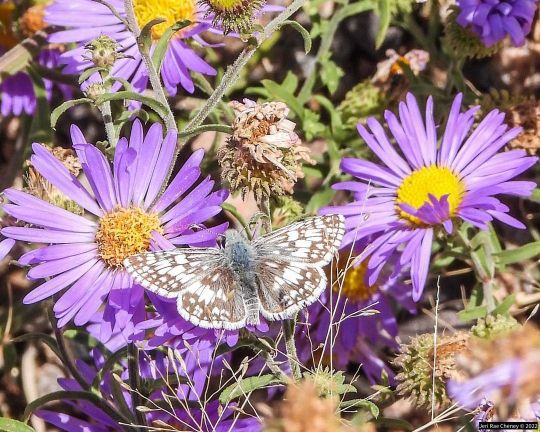
Scenes From My Walk - Common Checkered Skipper Butterfly on Tahoka Daisies a kind of Aster. #ScenesFromMyWalk #CheckeredSkipperButterfly #CommonCheckeredSkipper #Butterfly #Insect #Arthopod #ArthropodsOfNewMexico #Naturalist (at Santa Fe, New Mexico) https://www.instagram.com/p/CjnnrkIO-9m/?igshid=NGJjMDIxMWI=
#scenesfrommywalk#checkeredskipperbutterfly#commoncheckeredskipper#butterfly#insect#arthopod#arthropodsofnewmexico#naturalist
0 notes